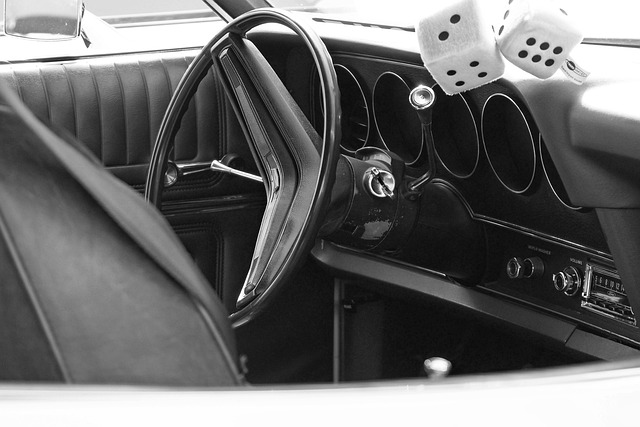“Looking to register your car in California? This comprehensive guide will walk you through the process, ensuring a smooth experience. From understanding crucial requirements like necessary documents and DMV procedures to verifying your Vehicle Identification Number (VIN) using trusted tools, we’ve got you covered. Discover how to pay fees efficiently and receive your license plate, all while leveraging online services for added convenience. Optimize your car registration journey with our step-by-step instructions, featuring insights from a leading dmv vin verifier.”
- Understand California Car Registration Requirements
- Gather Necessary Documents for Car Registration
- Visit a DMV Office or Use Online Services
- Verify Vehicle Identification Number (VIN)
- Pay Car Registration Fees and Receive Your License Plate
Understand California Car Registration Requirements

Before registering your car in California, it’s crucial to understand the state’s specific requirements. The California Department of Motor Vehicles (DMV) mandates that all vehicles operated within the state be properly registered and bear a valid registration sticker. This process involves verifying the vehicle’s identification number (VIN), which is a unique code that identifies your car. A reliable VIN verifier, such as those offered by the DMV or trusted third-party services, can ensure that the VIN matches the vehicle exactly as described in the title and insurance documents.
In California, you’ll typically need to present several crucial documents during registration, including proof of ownership (like a clear title), current auto insurance, and possibly an emission test certificate. Additionally, for a mobile vin inspection or a quick and easy vin verification process, many residents opt for digital solutions that streamline these steps, ensuring their cars meet all the necessary criteria before hitting the road legally.
Gather Necessary Documents for Car Registration

Before heading to the DMV, ensure you have all the essential documents for car registration. This includes your vehicle’s Registration Application (Form DV268), which can be obtained online or in person from the DMV. Also, gather your car’s Make and Model, Year, and Vehicle Identification Number (VIN) from the title or the vehicle itself. A mobile VIN verifier can assist in quickly and accurately retrieving this information if you have it on hand.
Additionally, prepare your driver’s license, proof of insurance, and a valid check or money order for the registration fee. If applicable, bring along any required documents for title transfer, like a bill of sale or lien release from a previous owner. Even with a mobile VIN inspection, always double-check that all these documents are up to date and complete to ensure a smooth registration process at the DMV.
Visit a DMV Office or Use Online Services

When registering your car in California, you have two primary options for submission: visiting a DMV office or utilizing online services. The former involves physically going to a regional DMV location, where you’ll need to bring essential documents and pass necessary inspections. This traditional method is ideal for those who prefer face-to-face interactions or require immediate assistance. On the digital front, California’s DMV offers an efficient online registration process, allowing drivers to submit applications, verify Vehicle Identification Numbers (VIN), and even schedule appointments through dedicated online platforms.
Leveraging a mobile VIN verifier can greatly simplify this process. These tools enable users to check their vehicle’s history and ensure its authenticity remotely. For instance, a mobile VIN inspection app can access comprehensive data on the car’s past, including ownership records, accident reports, and maintenance logs, all while confirming the VIN’s validity. This digital approach not only saves time but also enhances the overall convenience of registering your vehicle in California.
Verify Vehicle Identification Number (VIN)

Before you begin the registration process, it’s crucial to ensure your vehicle’s Vehicle Identification Number (VIN) is accurate and verified. This unique 17-character code serves as a fingerprint for your car, crucial for identifying its make, model, year, and other specifications. You can verify the VIN through various means, including using a DMV vin verifier or even a mobile vin verification app.
A simple online search with your vehicle’s details will often suffice to confirm the VIN. Alternatively, many mobile vin verificators offer quick and convenient services from the comfort of your home. This step is essential as an incorrect VIN can lead to registration delays or issues down the line. Ensure you have this information ready before proceeding with registering your car in California.
Pay Car Registration Fees and Receive Your License Plate

After completing your vehicle’s registration application, it’s time to settle the fees. The California Department of Motor Vehicles (DMV) charges a fee for car registration, which varies based on the type and age of your vehicle. You can pay online, by phone, or in person at any DMV field office. Once you’ve paid, the DMV will issue your license plates. These plates are unique to your vehicle and display both the vehicle identification number (VIN) and registration details.
A mobile VIN verifier can be useful here as it allows for a quick and convenient way to check your vehicle’s history before registering. This tool, often available through third-party apps, verifies the VIN by cross-referencing it with various databases, ensuring that the car is not stolen, has no outstanding issues, and providing important safety information. Alternatively, a mobile vin inspection can be conducted at many DMV locations for those who prefer an in-person approach.
Registering a car in California is a straightforward process, but understanding the requirements and gathering the necessary documents are key. By visiting a DMV office or utilizing online services, you can efficiently complete the registration. A crucial step involves verifying the Vehicle Identification Number (VIN) using a trusted dmv vin verifier to ensure accuracy. Once your application is approved, you’ll pay the required fees and receive your license plate, officially making your vehicle legal on California’s roads.
